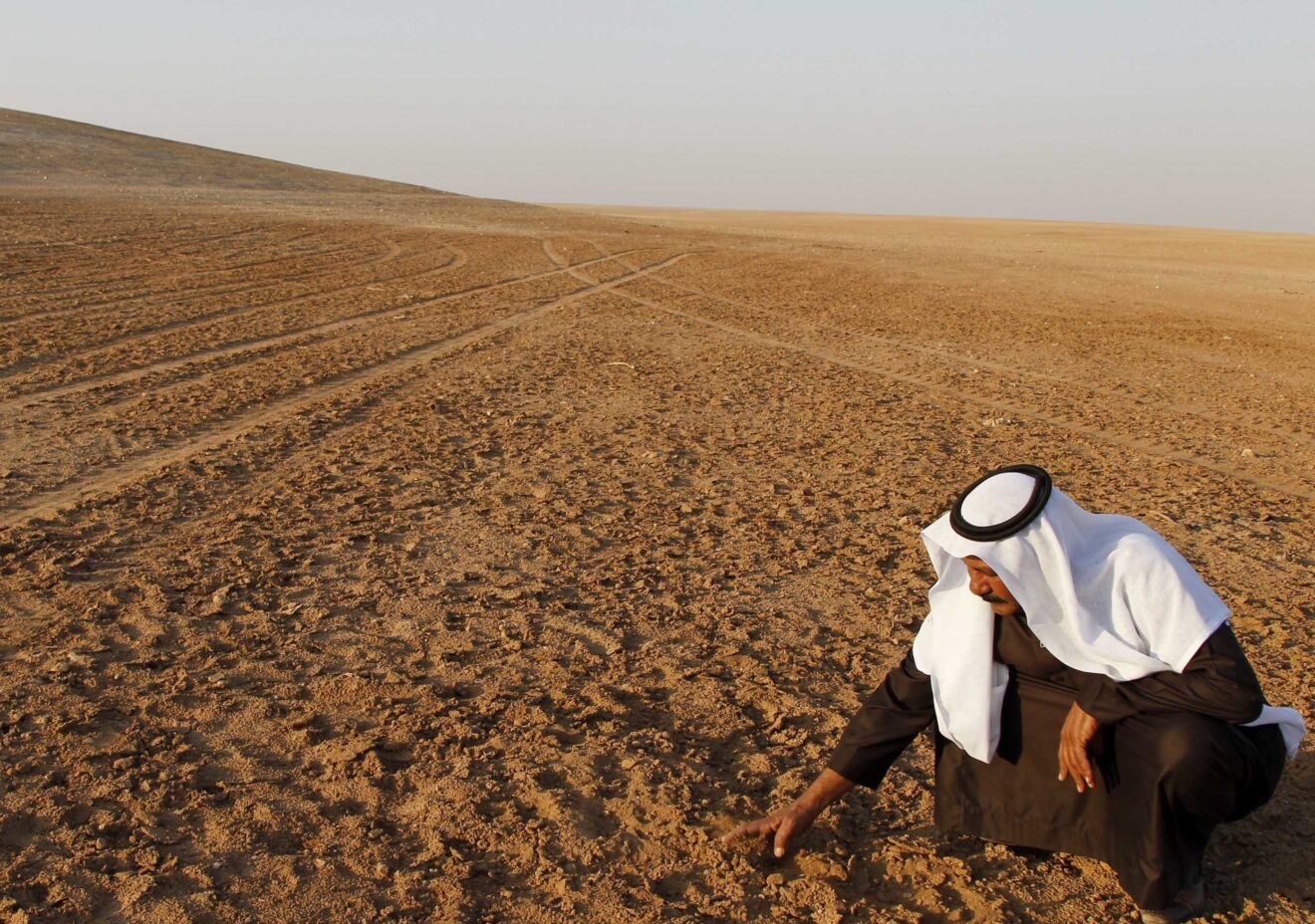Syria, once a breadbasket of the region, now faces one of its worst agricultural crises in decades. A devastating drought has gripped nearly every major wheat-producing region—from Idlib to Hama, Aleppo, Homs, and Raqqa—threatening to undermine the food security of millions and deepen the country’s dependency on external assistance.
Farmers returning home after years of displacement are discovering that their lands no longer yield hope, but dry husks of what was once Syria’s strategic crop.
“Like a Hungry Infant and a Mother with No Milk”
Abdelkader al-Rashid, a farmer in southern Idlib, walks among his wheat fields with heavy hands and heavier disappointment. “This year’s crop is like a hungry infant with a mother who has no milk,” he says, holding up brittle, rain-starved wheat heads. “Our fields remained thirsty the entire season. We had no water, no rain, and no way to irrigate—especially after regime militias looted and buried the equipment for our wells.”
In nearby Kafr Nabudah in northwest Hama, Hussein Abu Mohammad made the painful decision to lease his field to shepherds after the wheat turned yellow and empty by mid-April. “I hoped the crop would help me rebuild our house destroyed by barrel bombs,” he says. “Instead, I had to sell the harvest to feed my children.”
Their plight is echoed across the country.
FAO Warns of Food Disaster
The United Nations’ Food and Agriculture Organization (FAO) has issued a dire warning: up to 75% of Syria’s wheat crop may fail in 2025, due to record-low rainfall and deteriorating irrigation infrastructure. FAO’s representative in Syria, Tony Eitel, estimates a 2.7 million-ton wheat deficit, enough to feed over 16 million people for a year.
The drought’s impact has been especially pronounced in the al-Ghab Plain, traditionally one of Syria’s most fertile regions. According to Abdelaziz al-Qasim, head of the General Commission for the Development of al-Ghab, the collapse of the Afamia dam—due to looting and sabotage by former regime militias—exacerbated water shortages. Rising fuel prices and neglected irrigation canals completed the disaster.
“No Land, No Home”
Hazzaa al-Hawari, a returnee to Saraqeb, planted over 100 dunums of wheat in December 2024, hoping to use the revenue to rebuild his family’s damaged home. “But with no rain and no irrigation, our dreams withered,” he says. “We didn’t make a single lira. I’ve already sold 20 dunums just to survive.”
He fears he’ll need to sell more land next year just to stay alive.
External Aid and a Failing Harvest
According to climate researcher Anas Rahmoun, rain-fed wheat cultivation requires at least 235 mm of rainfall annually. Most areas received far less, leading to catastrophic yields. Syria’s Ministry of Agriculture estimates that this year’s production will cover only 19% of national bread needs.
In response, the Syrian government has accepted emergency wheat shipments from Iraq, totaling 220,000 tons, and smaller donations from Qatar, such as 734 tons delivered to Homs. These supplies have helped stabilize bread rations in some areas, but they are far from sufficient.
In comparison, Syria in 2007 cultivated 1.7 million hectares of wheat, producing over 4 million tons. Today, it is largely dependent on imports and foreign aid.
Government Tactics and International Procurement
Faced with an unsustainable domestic crop, Syria’s transitional government has shifted tactics. The Ministry of Agriculture announced a $420-per-ton purchase price for domestic wheat—a rate described by farmers as “fair” and “encouraging”—but concerns remain over irrigation access and infrastructure support.
Still, many suspect the government is preparing to quietly scale back support for wheat farming altogether. As reported by The Syria Report and Reuters, officials are considering cutting irrigation-intensive crops, citing water scarcity. Economist Jihad Yazigi notes that the government may adopt indirect measures: selling diesel at market rates (already underway), reducing support prices, and halting infrastructure and loan programs.
The country’s grain authority also launched two international tenders—each for 100,000 tons of wheat—marking the first large-scale procurement moves by the new administration. Meanwhile, Syrian grain officials estimate 750,000 tons of wheat will be procured locally in 2025, a significant shortfall compared to demand.
Financial Aid and the Battle for Bread
To alleviate pressure on farmers, agricultural associations in the al-Ghab region have begun disbursing $100 cash grants to wheat growers along the Orontes River. Yet the timing and amount are modest compared to the scale of need.
And as if the drought wasn’t enough, recent wildfires in the region destroyed over 184 dunums of farmland, including 145 dunums of wheat, compounding the crisis in areas like al-Suqaylabiya, al-Ziyarah, and Ain al-Kurum.
A Precarious Future
Once a symbol of Syria’s agricultural pride and economic resilience, wheat has become the country’s Achilles’ heel. The convergence of climate shocks, institutional neglect, and geopolitical upheaval has left millions wondering whether the simplest of human needs—bread—can be guaranteed.
With international aid plugging the gaps and government policies in flux, the 2025 wheat season may not just mark a bad year for crops. It may signal a turning point in how Syria feeds itself—or fails to.
This article was translated and edited by The Syrian Observer. The Syrian Observer has not verified the content of this story. Responsibility for the information and views set out in this article lies entirely with the author.


